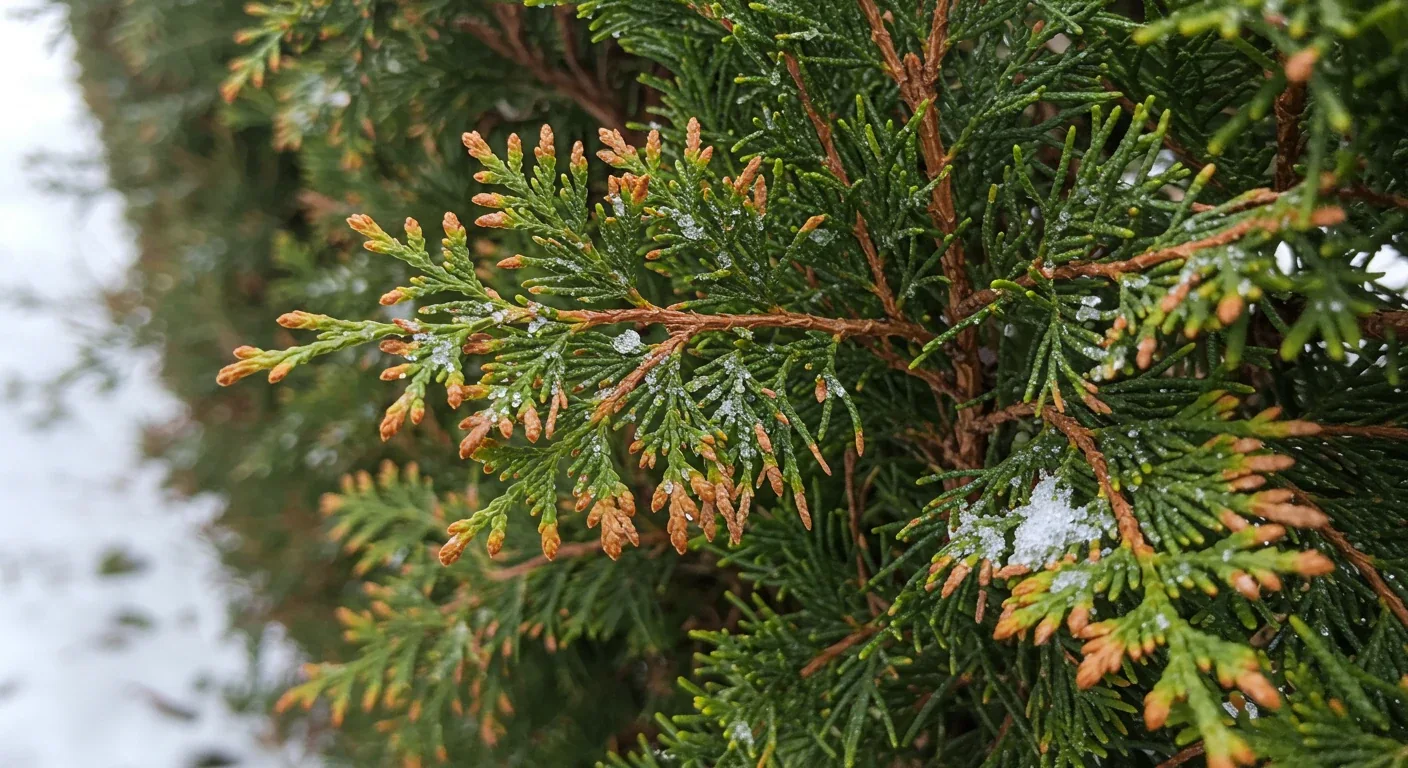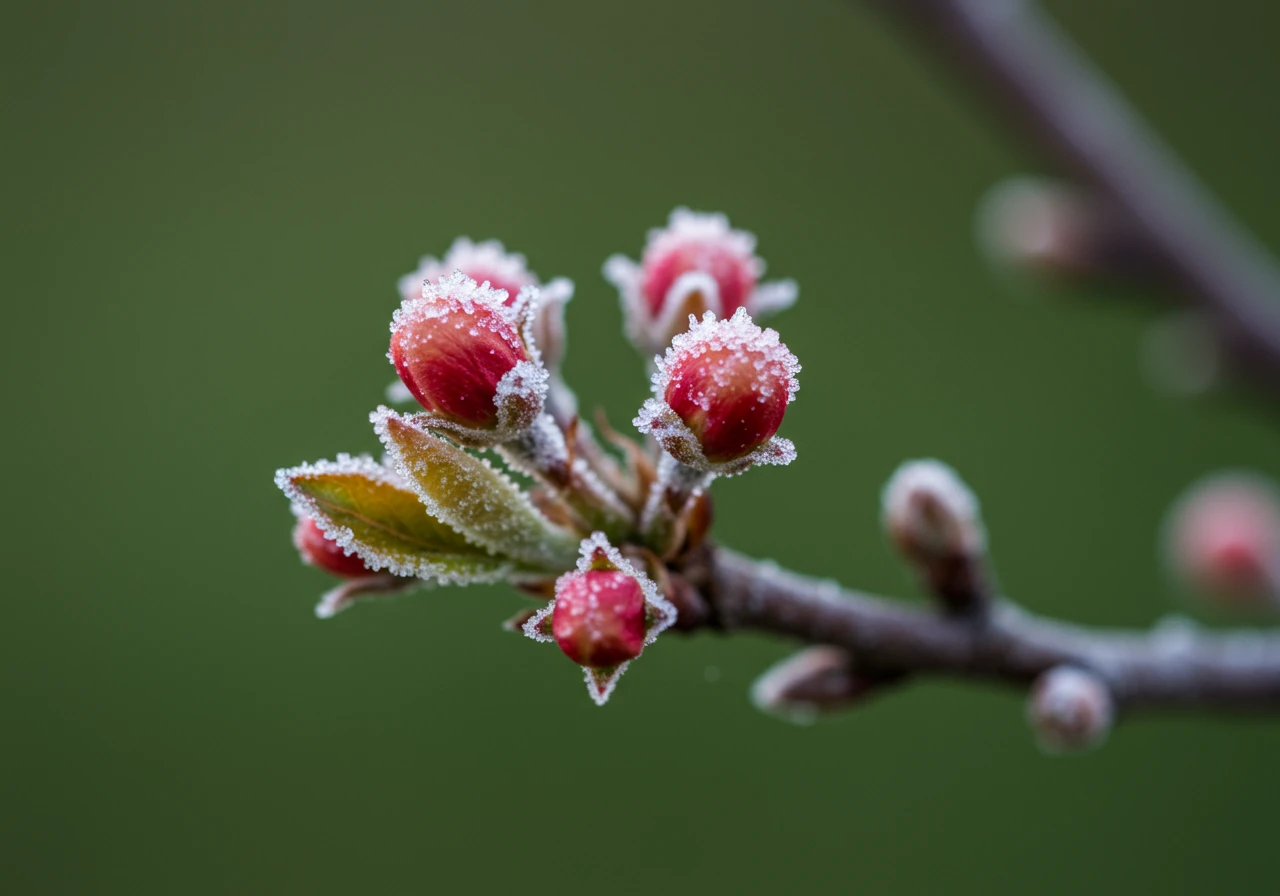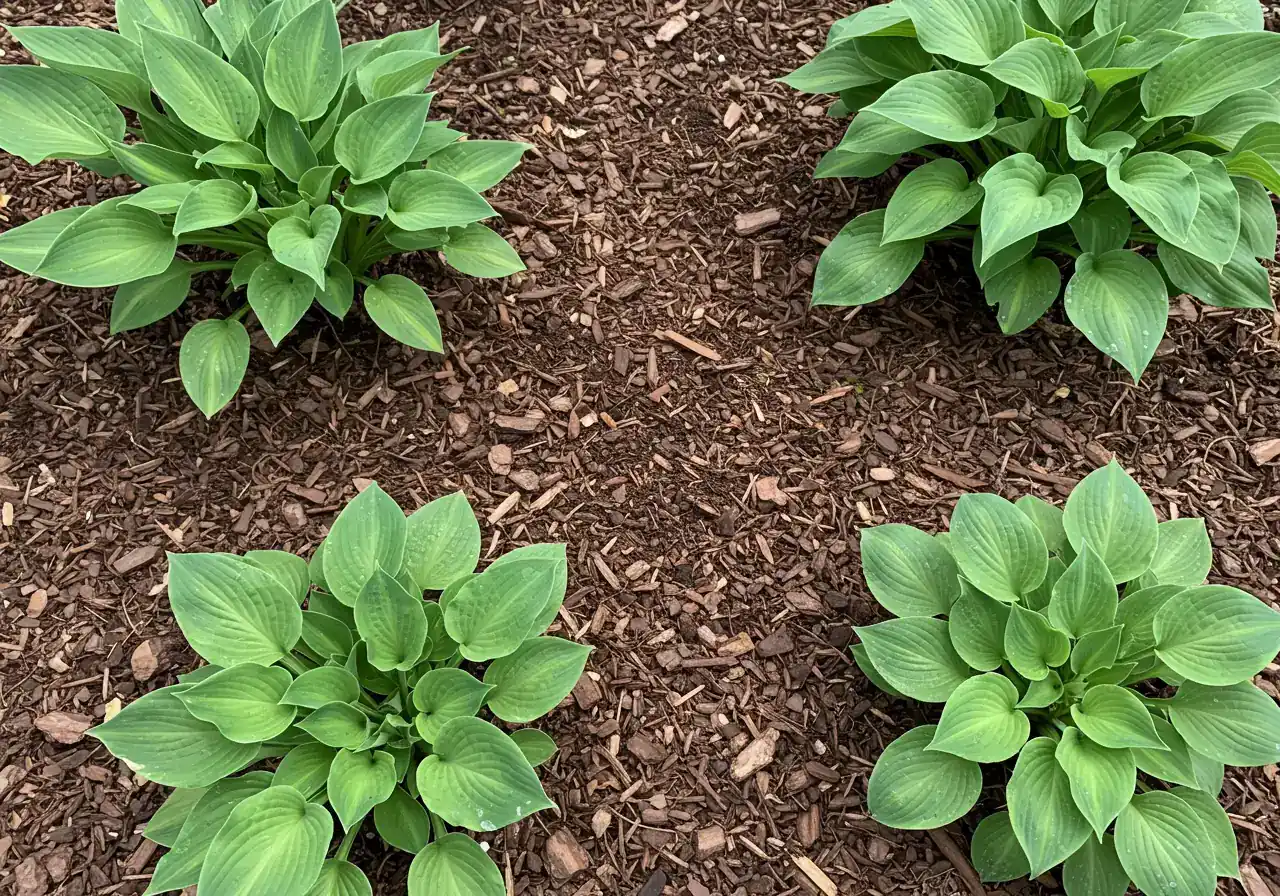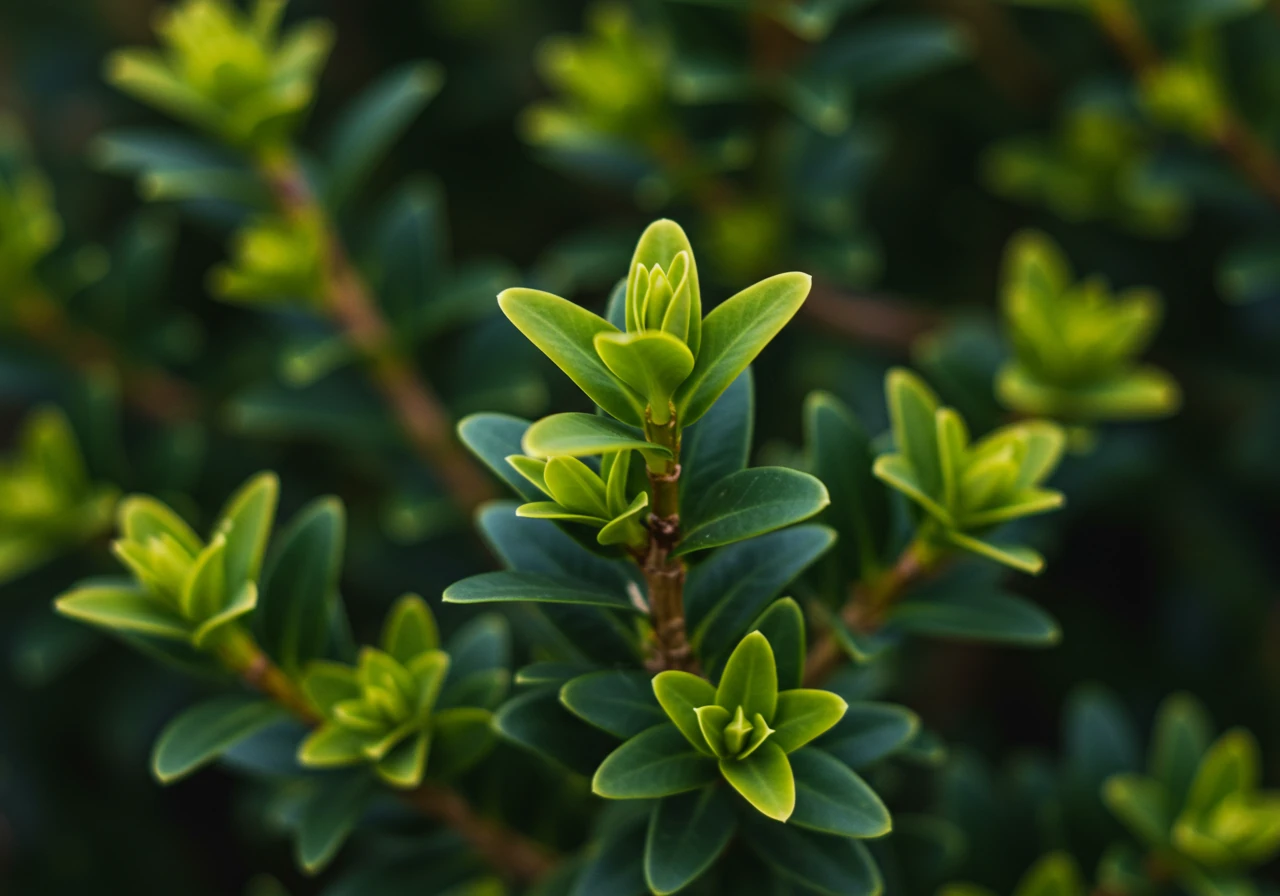Kenmore Plant Healthcare: Prevent Spring Loss & Save $$
Quick Summary: Spring Plant Care Essentials
- Spring in Ottawa brings unique challenges: frost damage, salt burn, pests, diseases.
- Proactive plant healthcare prevents costly replacements of trees and shrubs.
- Key actions: Timed winter protection removal, soil care, smart pruning, pest scouting, mulching.
- Kenmore Plant Healthcare offers expert diagnosis and preventative treatments.
- Investing in prevention saves money and ensures a thriving landscape.
Ready to protect your landscape investment? Request Your Quote Today!
Introduction: Surviving Spring's Sneak Attacks on Your Ottawa Landscape
Okay, Ottawa, let's breathe a collective sigh of relief! The snow is *finally* melting, the geese are back (love 'em or… not), and we can *almost* trade shovels for trowels. But just when you think your landscape is safe after a long winter hibernation, spring launches its own little sneak attacks. Think of them as Old Man Winter's parting gifts – nasty salt damage browning your precious cedars, confusing spots appearing on your favorite crabapple tree, or maybe some hungry insects waking up ready to feast on your emerging perennials.

It's a common frustration, isn't it? Homeowners across Ottawa, from Kenmore to Nepean, often discover that some beloved plants just didn't make it through the winter, or that new spring problems are cropping up fast as the weather warms. Watching your landscaping investment struggle after the thaw is disheartening, especially when you've put effort into gardening. Replacing damaged or dead trees and shrubs hits the wallet hard, too.
That's where we come in! Here at Kenmore Plant Healthcare, we're experts in helping your landscape thrive, not just survive, Ottawa's unpredictable spring transition. This article is your friendly guide to recognizing these common spring hazards. More importantly, we'll show you how our proactive plant healthcare services can diagnose issues early, prevent serious damage before it starts, and ultimately save you money and replacement headaches down the road. Let's get your yard ready for a fantastic growing season!
Why Ottawa Springs Can Be Brutal: Understanding Common Plant Casualties

Ah, spring in Ottawa! One day it’s glorious sunshine, the next… surprise frost! This unpredictable weather rollercoaster is a prime reason why some of your beloved plants might wave the white flag. It’s not just you; even seasoned gardening enthusiasts in areas like Nepean or Barrhaven see casualties. Let's break down the usual suspects behind spring plant struggles:
- The Freeze-Thaw Fiasco: Ottawa is famous for its wild temperature swings in spring. Warm days trick plants into thinking it's growing time, pushing out tender new leaves or buds. Then, BAM! A sudden hard frost hits overnight. This freeze-thaw cycle damages delicate plant cells, causing dieback, wilting, or preventing flowers and leaves from developing properly. It's like waking up ready for summer vacation only to find another snowstorm. For reliable local forecasts, check Environment Canada's Ottawa forecast.
- Water Woes (Too Much or Too Little): Melting snow often leaves soil saturated. While plants need water, constantly soggy roots can lead to root rot – a serious, often fatal, condition. Poor drainage, common in heavy clay soils found in parts of Ottawa, makes this worse. Conversely, a sudden dry spell after the melt, combined with spring winds, can quickly dehydrate plants that haven't fully re-established their root systems after winter. Making sure your watering systems are clear is key; check out our tips on how to Prevent Drip Irrigation System Clogs with Fall Maintenance to ensure they're ready for spring.
- Winter's Lingering Ghost: Damage that happened during winter often only becomes obvious in spring. Salt spray from roads can severely dehydrate and burn evergreens (those brown cedars along the driveway!). Heavy snow or ice might have cracked branches you didn't notice until leaves failed to appear. Sometimes, the sheer cold exposure was just too much for borderline hardy plants. A thorough Fall Plant Health Check Can Save You Money by identifying potential winter damage risks early. Learn more about road salt impacts from the City of Ottawa's Salt Management Plan.
- Pests and Diseases Wake Up Hungry: Just like us, pests and diseases get active when it warms up. Weakened plants are easy targets. Fungal diseases love the damp spring conditions, causing spots on leaves or rot. Insects emerge ready to munch on fresh growth. Ignoring these early signs can lead to bigger problems later.
- Nutrient Problems: After a long winter, soil nutrients might be depleted or locked up, especially in heavily landscaped areas. Plants need the right fuel to thrive. Getting the timing and type of fertilizer right is crucial. Applying too much, too little, or the wrong kind can stress plants further. For help getting it right, see our Kenmore Lawn Care: Your Simple Spring Fertilizing Guide.
Understanding these challenges is the first step. Often, problems that show up in spring actually started the previous autumn. Avoiding common mistakes then can make a big difference now; learn about Top Fall Garden Mistakes Kenmore Homeowners Should Avoid. If your landscape looks rough coming out of winter, professional help can diagnose the specific issues and recommend solutions. Our comprehensive Landscaping and Lawn Care Services cover everything from diagnosis to treatment, and our dedicated Kenmore Yard Cleanup Service can get your property back in shape fast.
The Kenmore Plant Healthcare Philosophy: Prevention Beats Replacement Every Time!
Here at Kenmore Plant Healthcare, we operate on a simple, guiding principle: prevention is always better (and usually cheaper!) than cure. Think of it like this: would you rather get regular oil changes for your car, or wait until the engine seizes up and needs a costly replacement? It’s the same idea with your valuable landscaping investment!
Our plant healthcare philosophy focuses on keeping your trees, shrubs, and perennials healthy and happy from the start. We believe proactive care – catching small issues before they become big problems – is the smartest way to ensure your garden continues to thrive. Waiting until a plant looks seriously ill or, worse, kicks the bucket, often leads to expensive removal and replacement costs. Let's face it, nobody enjoys that "Oops, it died" moment, especially when it hits the wallet.
Key Insight: Proactive plant care is like preventative medicine for your garden. Addressing potential issues early avoids major problems and significant replacement costs down the line.
So, what does proactive care look like?
- Regular Check-ups: We act like detectives for your plants, regularly inspecting them for early signs of pests, diseases, or nutrient deficiencies. Catching things early often means simpler, less invasive treatments.
- Creating a Healthy Home: This involves ensuring good soil health, proper watering techniques, and recommending the right pruning schedule. A strong plant in a good environment is naturally more resilient. Sometimes, just a thorough tidying up makes a difference; our general Property Clean Up services help remove potential hiding spots for pests and disease spores.
- Smart Planting: Prevention starts at the beginning. Choosing the right plant for the right location (sun exposure, soil type, moisture levels) is critical. Our advice on Plant and Landscaping Material Selection helps you avoid setting plants up for failure.
The alternative – reactive care – usually means dealing with plants already under significant stress. Treatment options become limited, and often the only solution is removal and replacement. This isn't just the cost of a new plant; it's the labour for removal, disposal, new soil, planting, and the time it takes for the new plant to establish. It can completely change the look of your yard, sometimes requiring significant Landscape Transformations to restore the balance.
Cost Comparison: Prevention vs. Replacement (Example: Mature Shrub)
| Action | Preventative Care (Annual Estimate) | Replacement Cost (One-Time) |
|---|---|---|
| Inspection & Diagnosis | $50 - $100 | (Included in replacement) |
| Minor Treatment (e.g., oil spray) | $75 - $150 | N/A |
| Shrub Removal & Disposal | N/A | $150 - $300+ |
| New Mature Shrub Cost | N/A | $100 - $400+ |
| Planting Labour & Soil | N/A | $100 - $250+ |
| TOTAL ESTIMATE | $125 - $250 / year | $350 - $950+ / incident |
*Costs are estimates and vary based on plant size, type, and specific issues.
Whether you're maintaining a beautiful garden in Metcalfe or Russell, need specific help with our Kenmore Yard Cleanup Service, require assistance further out with our Marionville Property Cleanup Service, or even have larger needs managed by our City Property Cleanup Service teams across Ottawa, our preventative approach remains the same. We aim to save you the cost and heartache of replacement by keeping your landscape healthy and vibrant season after season. It just makes good sense! Check out our Google Business Profile for reviews from local homeowners.
Your Spring PHC Playbook: Essential Steps for a Thriving Ottawa Garden
Okay, garden warriors, let's roll up those sleeves! Winter tried its best, but spring is officially calling the shots. To make sure your Ottawa landscape answers with gusto, here’s your Plant Healthcare (PHC) playbook – essential steps to get things humming. Think of this as your garden's spring training montage!

1. The Great Unwrapping: Timing Winter Protection Removal
Resist the urge to rip off all that burlap and protective gear on the first sunny day! Ottawa's spring is a notorious trickster (Zone 5a/b means surprise frosts are always invited to the party).
- Wait for Consistent Above-Freezing Temps: Monitor the forecast. Don't fully unwrap sensitive shrubs or trees until the risk of hard frost (below -4°C) has significantly passed, usually later in April or even early May.
- Gradual Removal is Key: On milder, overcast days, start by loosening wraps or opening the tops of covers. Let plants acclimatize slowly over a week or two before fully removing protection. This avoids shocking them with sudden sun and wind exposure after their cozy winter nap.
- Check Underneath: Once removed, gently inspect stems and bark for any winter damage or trapped moisture that could invite disease.
2. Soil Awakening: Give Your Garden Beds Some TLC
Healthy plants start with healthy soil. After the snow melts and the ground isn't a squishy mess:
- Gentle Rake-Out: Carefully rake away matted leaves and winter debris from garden beds. This improves air circulation and discourages pests and diseases. Don't be too aggressive – tiny perennial shoots might be emerging! A thorough cleanup now prevents bigger headaches later; our teams can lend a hand, whether you need the Metcalfe Property Cleanup Service or are closer to Marionville and require the Marionville Garden Clean Up Service.
- Improve Structure: Ottawa soils, like the heavy clay often found in areas like Barrhaven, benefit hugely from adding organic matter. Gently incorporate compost or well-rotted manure to improve drainage and nutrient content. For large areas needing soil work, consider our Soil Preparation services. If bare patches in the lawn need addressing alongside garden beds, improving the soil is also the first step towards successful Sod Installation.
- Consider Aeration (Lawns): If your lawn looks compacted, spring is a good time for core aeration before it actively starts growing. This is part of our comprehensive Lawn Care program.
3. Pruning Power Play: Snip, Snip, Hooray!
Spring pruning helps shape plants and encourages healthy new growth. But hold your horses on some things!
- DO Prune: Dead, damaged, or diseased branches on trees and shrubs anytime you see them. Also, prune summer-flowering shrubs (like Potentilla or Spirea) now to shape them before new growth starts.
- DON'T Prune (Yet!): Spring-flowering shrubs like Lilacs, Forsythia, or Weigela. They bloom on last year's wood. Pruning them now means snipping off this year's flower show! Wait until *after* they bloom to prune these.
Confused about what to prune when? Our expert team can handle it as part of regular Garden Maintenance.
4. Pest & Disease Scouting Mission:
Be proactive! Regularly walk through your garden and inspect your plants closely.
- Look For: Holes in leaves, sticky residue (honeydew), weird spots, fuzzy mould, or tiny critters. Catching pests or diseases early often allows for simple, eco-friendly solutions like insecticidal soap or just removing affected leaves. Early detection is a cornerstone of good plant healthcare.
- Local resources like the Ontario Ministry of Agriculture, Food and Rural Affairs (OMAFRA) website can help identify common pests.
5. Mulch is Your Friend:
Once the soil has warmed up a bit (usually May), apply a fresh layer of organic mulch (like shredded bark or cedar) around your trees, shrubs, and perennials.
- Benefits: Mulch helps retain soil moisture (less watering!), suppresses weeds (hooray!), and keeps soil temperatures more even.
- How Much: Aim for a 2-3 inch layer, but *very importantly*, keep it pulled back an inch or two from the base of stems and tree trunks to prevent rot. We offer professional Mulching and Edging services.
6. Smart Spring Feeding (Fertilizer Facts):
Plants need food to thrive, but timing and type matter.
- Don't Rush: Wait until plants are actively growing. Fertilizing too early can push weak growth that's vulnerable to late frosts.
- Less is More: Often, good compost provides enough nutrients. If you do fertilize, use a balanced, slow-release fertilizer according to package directions. Avoid excessive nitrogen, which can promote leafy growth at the expense of flowers or fruit. A soil test can tell you exactly what’s needed.
- Healthy lawns also benefit from the right approach; check out our expert Lawn Care Services for tailored fertilization plans, including our Spring Fertilizing Guide.
Following these steps sets the stage for a gorgeous Ottawa garden. It might seem like a bit of work, but this preventative care is far easier than dealing with major problems later, and can be the first step towards amazing Landscape Transformations. If you ever feel overwhelmed or have questions about specific plants, don't hesitate to reach out – you can view our company's Privacy Policy online regarding how we handle your contact details. Happy gardening!
How Kenmore Plant Healthcare Delivers Spring Success (and Savings!)

Alright, let's talk turkey – or maybe, let's talk tulips and thriving trees! You want your Ottawa yard to leap into spring looking its absolute best, right? But tackling those potential post-winter blues – the sneaky salt damage, the awakening pests, the tired soil – can feel overwhelming. That's where Kenmore Plant Healthcare becomes your secret weapon for a successful (and less stressful!) gardening season, ultimately saving you money.
Think of us as your landscape's personal trainers and nutritionists, rolled into one friendly team. We don't just react to problems; we actively prevent them. Here’s how our specific spring services give your plants a fighting chance:
Typical Spring Plant Stressors We Address
*Chart represents common issues encountered; percentages illustrative.
- Expert Spring Assessment & Diagnosis: Our trained eyes start by thoroughly inspecting your trees, shrubs, and perennials as they wake up. We're looking for subtle signs of winter damage (cracked branches, salt burn on evergreens), early disease symptoms, or overwintering pests before they multiply. Catching these issues early in places like Ottawa Property Cleanup Service areas means simpler, less costly treatments compared to dealing with a full-blown crisis later.
- Precision Pruning Power: We go beyond just snipping branches. Our team knows exactly what needs pruning in spring to remove winter damage, encourage healthy structure, and maximize flowering potential – and just as importantly, what *not* to prune yet (like those precious lilacs!). This prevents costly mistakes and helps rejuvenate plants stressed by winter.
- Soil Revitalization Strategies: Healthy plants need healthy roots. We assess your soil conditions and can recommend specific actions. This might involve targeted fertilization based on plant needs (not just a generic sprinkle!), or advising on crucial steps for proper Soil Preparation like adding organic matter to improve drainage and nutrient availability, especially vital after a long winter.
- Proactive Pest & Disease Management: Instead of waiting for an infestation, we focus on early detection and Integrated Pest Management (IPM). This often involves using targeted, lower-impact treatments like horticultural oils precisely when they are most effective against emerging pests and diseases, protecting your landscape investment without unnecessary chemicals.
- Synergy with Cleanup: A clean yard is a healthier yard. Removing leftover leaves and debris eliminates hiding spots for pests and disease spores. While we focus on plant healthcare, our services complement general tidiness efforts, like those offered by the dedicated Metcalfe Garden Clean Up Service or the specialized Marionville Garden Clean Up Service. For broader needs across the city, comprehensive tidying from a City Yard Cleanup Service or even Ottawa Yard Cleanup Service also supports overall plant vitality. Check out our work in various neighbourhoods like City Garden Maintenance Service areas.
We often integrate these services into a personalized ‘Seasonal Calendar’ approach – a proactive plan ensuring your landscape gets the right care at the right time, year-round. This preventative focus is key to avoiding the significant expense and disappointment of replacing mature trees and shrubs*. Our expertise directly translates into savings for you. See examples of healthy yards on our Transformations page.
Ready to give your Ottawa landscape the expert spring boost it deserves? Let’s chat about a plan tailored to your specific needs. Feel free to Contact Us for a consultation. We value your input, and you can always share your thoughts on our proposals via our Estimate Feedback page. Let’s make this spring your garden’s best one yet!
A Typical Spring Plant Healthcare Timeline
Early Spring (Late March/April)
Inspection for winter damage (salt burn, broken branches). Dormant oil application for overwintering pests if needed. Gentle debris cleanup.
Mid-Spring (April/May)
Monitor bud break. Prune summer-flowering shrubs & remove deadwood. Assess soil moisture. First targeted fertilization if required. Monitor for early fungal issues.
Late Spring (May/June)
Apply mulch once soil warms. Prune spring-flowering shrubs *after* bloom. Monitor actively for insect pests (aphids, caterpillars). Assess plant vigour and nutrient needs.
Ongoing
Regular monitoring. Address issues as they arise. Ensure proper watering, especially for new plantings from services like Garden Install or Sod Installation.
Kenmore PHC Quick Tips: Spring Survival Secrets
Okay, Ottawa neighbours, feeling a bit overwhelmed by spring landscaping tasks? Don't sweat it! Here are Kenmore Plant Healthcare's top quick tips for spring survival, because timing and local know-how are everything, especially with our unpredictable weather.
- Patience Pays Off: Seriously, don't rush to uncover tender plants or prune spring bloomers like lilacs too early. Wait for consistent warmth to avoid frostbite surprises. A little patience now saves heartache later!
- Clean Smart, Not Hard: Gently rake away winter debris from gardening beds to improve airflow. If the cleanup feels like too much, professional help like a City Garden Clean Up Service or even more localized teams like the Ottawa Garden Clean Up Service can give you a clean slate.
- Be a Plant Detective: Regularly inspect your plants for early signs of pests or disease. Catching problems early makes treatment easier and is a core part of effective, ongoing Garden Maintenance.
- Mulch Magic: Once the soil warms (usually May), apply a 2-3 inch layer of organic mulch around plants – but keep it away from stems and trunks! This helps retain moisture and suppress weeds.
- Ask the Experts: Seeing weird spots on your crabapple or worried about your cedars, maybe out near Kars or Vernon? Don't guess! It's best to Contact Us for specific advice. Once you fill out our form, you’ll see our confirmation on the Thank You page. For details on how we work, please review our Terms and Conditions.
Frequently Asked Questions (FAQs) for Ottawa Gardeners
It's a common worry in Ottawa! Give them time – some plants are just fashionably late to the spring party. Try the 'scratch test': gently scratch a small bit of bark on a twig. If it's green underneath, it's alive! Brown and brittle means that part *might* be dead. Wait until late spring before giving up hope. Sometimes a good tidy-up helps you see new growth emerging; consider help like the Metcalfe Yard Cleanup Service to clear away debris.
You're not alone! The simple rule: prune *summer*-flowering shrubs (like potentilla, spirea) in early spring *before* new growth starts hard. For *spring*-flowering shrubs (lilacs, forsythia), wait until *right after* they finish blooming. Pruning them early removes the flower buds! Pruning done right complements other tasks that keep beds looking sharp, like expert Mulching and Edging.
Absolutely, safety is our top priority! We practice Integrated Pest Management (IPM), meaning we use the least impactful solutions first. When treatments are needed, we select products carefully and apply them responsibly according to Health Canada guidelines. We always communicate with you beforehand about what we're doing and any simple precautions, like keeping pets indoors during application. Our professional standards are important to us; learn more About Us and our commitment to responsible care.
Ah, Barrhaven clay – it holds moisture well but can get compacted! The best fix is adding organic matter *every year*. Mix compost, well-rotted manure, or quality topsoil into your beds. This improves drainage and aeration, making roots happier. Avoid working clay soil when it's very wet. Improving soil is crucial, especially if you're planning new beds or thinking about a professional Garden Install.
Great question! Think of us as plant doctors. While general landscapers might offer Lawn Care or build patios, we specialize in the *health* of your trees, shrubs, and perennials. We diagnose diseases, tackle pest problems, manage nutrient issues, and focus on preventative care to keep plants thriving. General tidiness is important too, like the work done by a Marionville Yard Cleanup Service, but our core focus is expert plant health assessment and treatment.
How exciting! Starting fresh in Greely gives you a blank slate. Begin small – maybe one or two beds. Consider getting a soil test to see what nutrients it needs (new builds often have compacted or poor subsoil). Observe the sunlight patterns throughout the day. Most importantly, choose plants suited for Ottawa's climate (Zone 5a/b) *and* your specific light/soil conditions. Resources like the Friends of the Central Experimental Farm offer great local plant advice. Don't hesitate to ask for professional help with planning and Material Selection – planning right prevents headaches later!
Conclusion: Invest in Prevention, Reap a Beautiful Spring (and Save Money!)
So, what's the bottom line for your beautiful Ottawa yard this spring? Simply put: prevention pays! Think of proactive plant healthcare as your secret weapon against costly replacements and gardening heartache. It might seem tempting to just wait and see, but tackling winter's leftover surprises and nipping early pests or diseases in the bud now saves you serious cash and hassle compared to the expense of removing and replacing struggling mature trees and shrubs*. Why wait for trouble when you can invest smartly in keeping your landscape healthy from the start?
Here at Kenmore Plant Healthcare (part of Clean Yards), we specialize in diagnosing and treating issues specific to our unique Ottawa region climate, from the newer landscaping in areas like Greely to established gardens in charming Manotick. Our expert team uses tailored prevention strategies to help your investment flourish, ultimately saving your back and* your wallet! Let us handle the plant detective work so you can simply enjoy a gorgeous spring.
Ready to give your plants their best chance for a vibrant, stress-free season?
- Get your personalized spring plant health assessment!
- Contact us today for a friendly, no-obligation quote.
Let’s partner up to make this your landscape's most beautiful spring yet! Contact Kenmore Plant Healthcare / Clean Yards through our website. We proudly serve Ottawa and surrounding communities, including Kenmore, Metcalfe (Metcalfe Property Cleanup), Russell, Embrun, Winchester, Vernon, Kars, Osgoode, Greely, Manotick, Richmond, Nepean, Barrhaven, Marionville (Marionville Cleanup) and across the city (City Property Cleanup).

